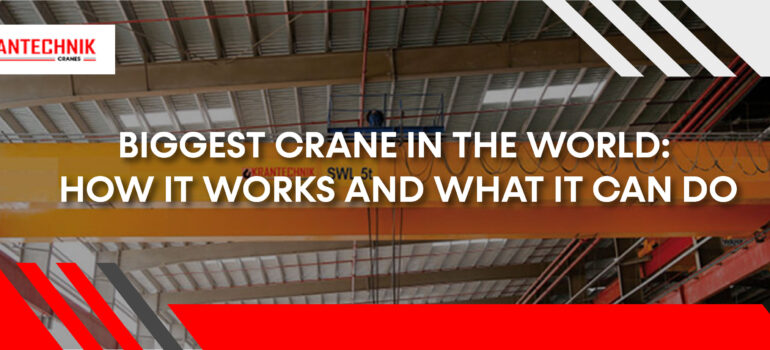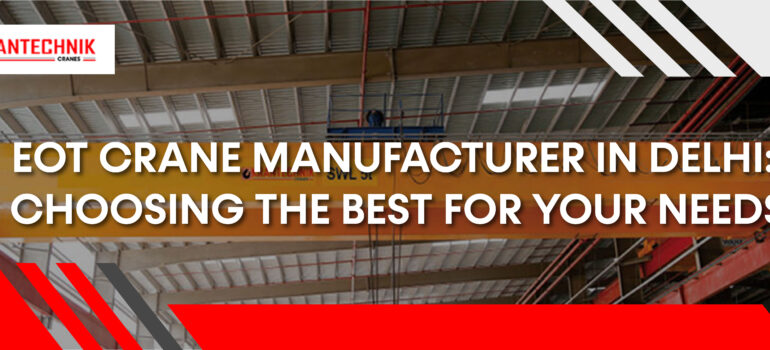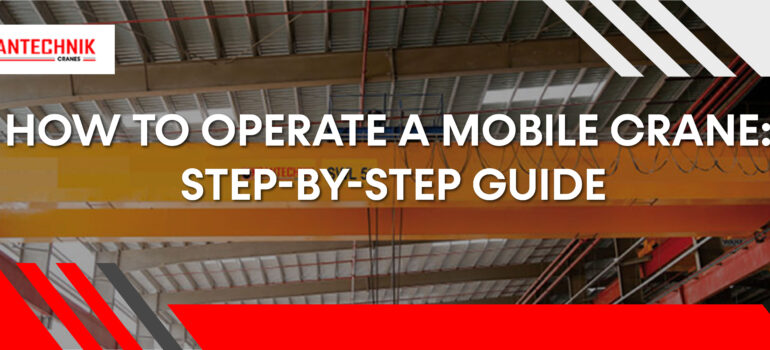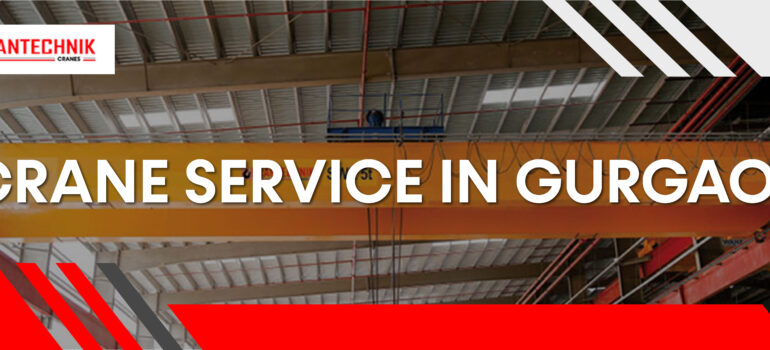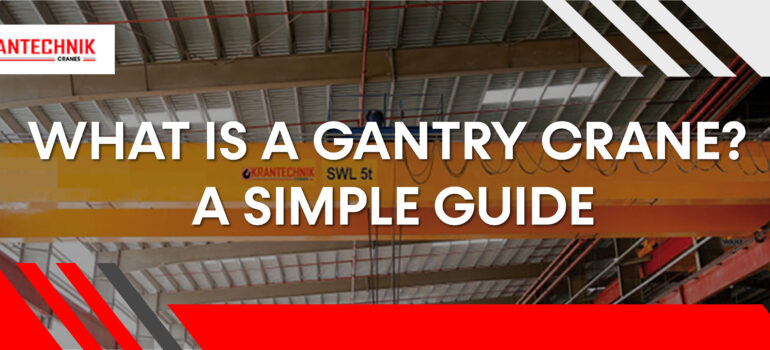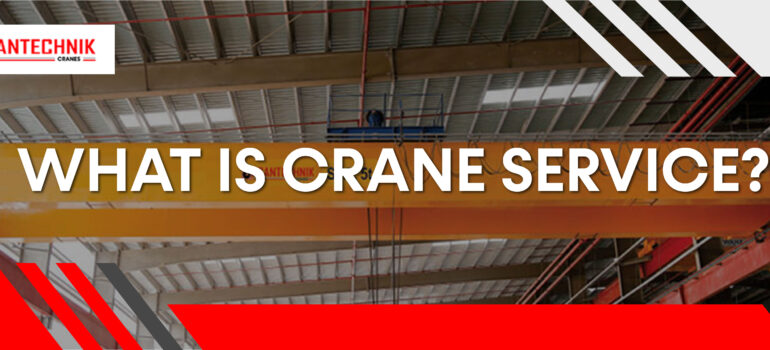Role of Crane Services to India Economic Growth
Imagine a construction site with several workers and construction machinery. Structural steelwork is going up, enormous precast concrete elements are on standby and constructed, and equipment requires cautious maneuvering. In this orchestra of progress, there is one key player without which the performance would be incomplete: crane services.
While the latter has been the epicenter of growth for the Indian infrastructure industry, there is another talk town hero: services providing crane solutions for sectors that require lifting of heavy equipment. Ranging fromautomation of houses to industrial giant buildings including factories crane services played an important role of ensuring the lifting of equipment’s was done efficiently.
Let’s explore what makes crane services so essential for the large-scale construction companies; the scope of which is well explained by Krantechnik Cranes that is specializing in providing European quality cranes to India.
The Support System of Large Sectors
Crane services are not simply a method of moving around large objects but rather they act as a component for various fields of work such as construction, manufacturing, transport and energy production including windmills and hydroelectric power plants. In an ever expanding economy like India where infrastructure development is on the anvil these services offer the requisite muscle to transport material safely and effectively.
Any project lacking efficient crane services is doomed to suffer the consequences: programme setbacks, jeopardized safety of the employees, and extra expenses. This is true whether they are involved in day to day business of lifting equipment or constructing a new city skyline or constructing a wind farm out in the middle of nowhere.
Analyzing the Crane Service: Stages
Crane services are not just a mechanic lifting vocation. They are formalized and normally proceed in stages, the purpose of which is to minimize disruption. Let’s explore these stages:
Planning the Lift
With any successful lift, it is always recommendable to have a map, as it were. A Crane service provider like Krantechnik Cranes increasingly spends considerable time and energy in determining the specific needs of the client. Some of the things that they consider include the gross weight of the load and the dimensions of the load that includes the length width and height and the layout of the construction site.
From this information, the crane service provider advises on the best type of crane suitable for the task. For instance:
Mobile cranes are perfect because of their versatility and are normally deployed for constructions that are carried out within congested areas such as the urban center.
All terrain cranes are thus used in construction sites that are off road to allow manoeuvring in rough surfaces.
Fixed jib cranes or tower cranes are commonly used to raise and lower heavy materials in structures which require more height more so in construction sites.
Crawler cranes have the maximum lifting capacity frequently if the load factor is the biggest.
This first organizing stage enables it to be known whether the crane to be used on the job will be capable of satisfying the specifications of the particular task under scrutiny and at the same time it is safe to be utilized.
Performing the Lift with Descriptiveness
That is probably the best time to put into action, the ‘lift’ as the planning process has been completed to the tee. This is where experience and precision come into the account.
For instance, Krantechnik Cranes has professional and accredited operators of the cranes who assess risks before lifting them. The personnel map out the lift route in detail and look at every possible risk factor possible. It is something like a ballet; any gesture matters, and any second as well.
The vast experience means the operators can work under existing conditions and make adjustments to guarantee all goes well regardless of the circumstances. This not only helps to maintain the correct timing of the project but also reduce the risk factors.
Beyond the Lift: Additional Services
Lifting and placing a load in its required position defines crane service and is not limited to that. Companies like Krantechnik Cranes offer a host of additional services that bring even more value to your project:
Transportation and Logistics: Just imagine transplacing a crane from one site to another; this is not an easy task. All transportation, ownership of all permits, and conformity to local authorities are handled by Krantechnik Cranes.
Rigging and Installation: It is important, particularly prior to lifting, that the loads to be carried by the crane are properly rigged. This in a way minimizes the chances of an accident happening and so the load being lifted is more than likely to remain upright.
Maintenance and Repair: Like any other machine, the best of cranes will need maintenance at one point or the other in order to give their best. Services delivered by Krantechnik Cranes are to prevent any form of breakdown and ensure that its fleet is ever in a working condition.
Operator Training: Krantechnik Cranes also have corresponding training for workers, thus it guarantees your personnel’s performance of the cranes’ safe usage and handling of loads.
Safety: The Top Priority
The general nature of this industry is such that heavy duty machineries are used frequently, they therefore have zero tolerance for cases.. This is despite being very sensitive operations since they are normally considered to be very dangerous, safety precautions must at all times always be followed.
For example, Krantechnik Cranes lays particular emphasis on safety for its employees. Policies of safety In this company safety regulations of the industry has been implemented to the letter and the company has ensured the promotion of safety culture. Their operators are always in training, to know the latest safety measure, so as to execute every project without endangering the lives of the people involved.
Krantechnik Cranes: Your Trusted Partner
The changing infrastructure situation in India possibly not without its own peculiarities. Whether it be putting up large buildings, creating factories or even assembling large complicated machines such as cranes services are immensely important in the progression of these entities.
This then begs the questions, what makes Krantechnik Cranes an ideal partner for your next project?
Unmatched Expertise: Through many years in the development of cranes and also through severe presence in the Indian market, Krantechnik Cranes offers the required experience to each project. To be more precise, they approach each client in a highly personalized manner, which guarantees that their and your requirements will be met.
Top-of-the-Line European Cranes: An exclusively European crane manufacturer, Krantechnik Cranes provides equipment that is durable, highly accurate and state-of-the-art in terms of technological application. This provides an insurance of the fact that your project will be done in the most efficient way possible as quality is properly considered for INSTANCE.
Commitment to Safety: This principle is at the heart of operations at Krantechnik Cranes. Throughout organizing the move, right down to the last time it is lifted and placed in another place, they make sure that all necessary precautions are observed, for the security of your team and project.
Conclusion
India is growth and development is on the progressive process, and thus the requirement of the efficient crane services is more important. Last but not the least, hire a provider and you get a partner who can successfully complete the project –Krantechnik Cranes, for instance, is a good example.
Complementing these moves is a great team of engineers, high-performance cranes, and strong commitment to maintaining safety standards that Krantechnik Cranes is demonstrating as a key player in the future construction of India. Whether it is a high rise building or an industrial plant, they will help to do your project to the best way possible, within the shortest time possible and in the most careful way possible.

